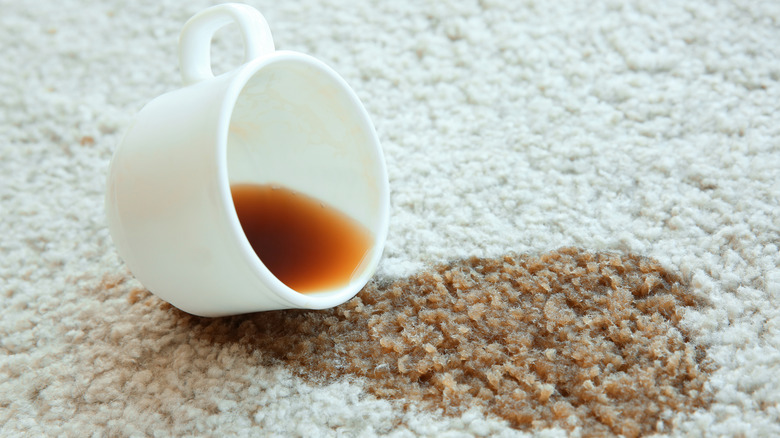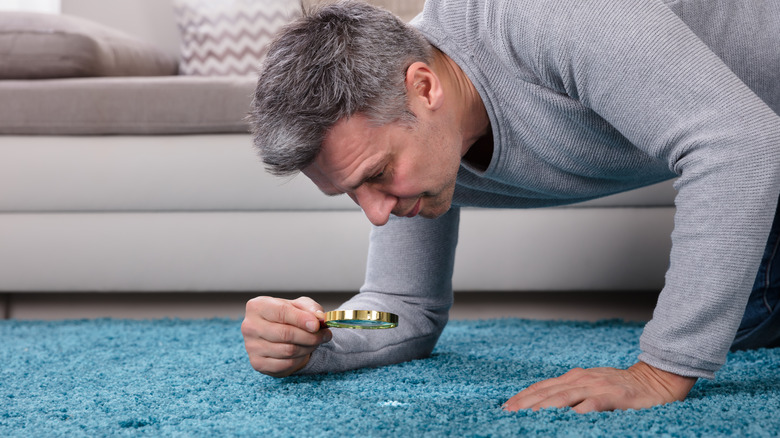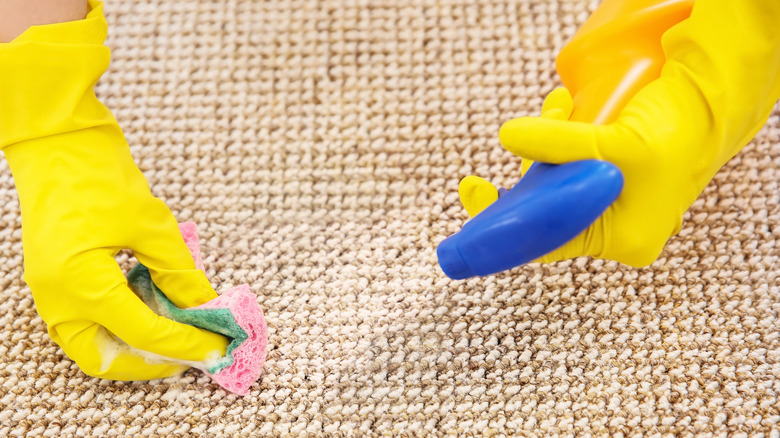Why The Spot In Your Carpet Keeps Coming Back, And How To Clean It For Good
As we all know, accidents happen, which means that sometimes you end up with red wine, coffee, or pet stains on your pristine rugs or carpets. While you may already have a tried-and-true stain removal strategy in place, you may have noticed that stains occasionally resurface — even after you think you've banished them for good.
So, why does this happen? There are two primary reasons reappearing stains occur: soiling and wicking. One is the result of improper cleaning techniques, while the other is caused by deep stain absorption. Both issues have their own unique prevention strategies and solutions.
While a reappearing stain may seem like a cause for alarm, there are a number of tips and tricks to help you identify the cause of the problem and stop it from happening again. Read on to learn more about why recurring stains happen and how to make sure they don't come back.
Determine whether or not the recurring stain is caused by soiling
According to The Spruce, soiling takes place when leftover carpet cleaner residue remains on a rug or carpet. It can also occur when a spill isn't cleaned thoroughly, leaving particles behind. Both of these issues result in a sticky substance that attracts dust and other particles, making it appear as though the area is still dirty. Per the outlet, in order to avoid soiling, the cleaner can be rinsed off with lukewarm water after use, which "will hopefully help to rinse the residue out of the fibers." Further prevent soiling by always ensuring that spills are cleaned completely and stain removers are rinsed or blotted away.
To get rid of soiling stains, fill a spray bottle with warm water and apply it lightly to the affected area. Then, cover the spot with a clean, white towel and weigh it down with heavy objects to help it absorb the liquid overnight. The following morning, the towel will have soaked up both the water and remaining carpet cleaner residue.
How to prevent and remove wicking stains
Wicking, on the other hand, takes place when a liquid is absorbed into the carpet's base or padding. While the top layer of the carpet may appear clean, the offending liquid will resurface over time as the rug's fibers draw them up. To prevent wicking, make sure to always clean spills as soon as possible. The longer they're allowed to sit, the more likely it becomes that they will seep into the carpet's backing.
If you already have a reappearing stain on your carpet and suspect it is caused by wicking, consider this cleaning solution recommended by Hunker. First, add a few drops of dish soap to a small bucket of water and mix. Then, thoroughly saturate the stained area and let the cleaning solution absorb for a few minutes. Press paper towels or a dry white towel into the damp area of the rug in order to absorb the liquid. Finally, use a shop vac to extract all the remaining moisture from the spot. Repeat the process if necessary.
When you're done, your carpet should hopefully look good as new!


